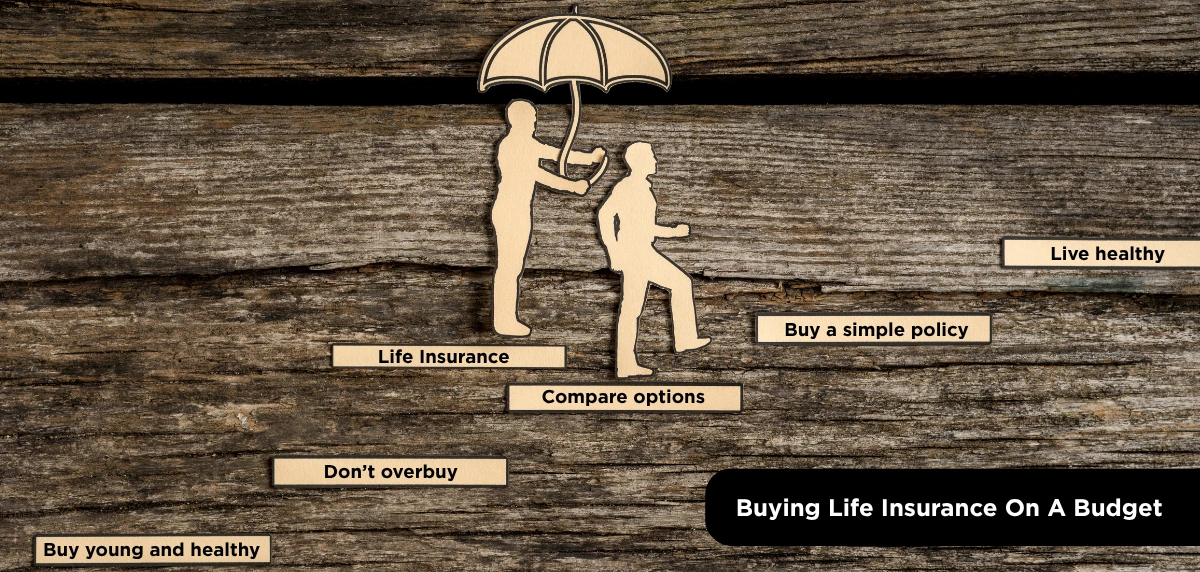Life insurance may seem like an avoidable purchase when you’re on a tight budget. However, in most situations and for most people, it can be one of the smartest financial products to purchase. Life insurance can provide financial protection for your loved ones, ensuring they are taken care of financially during times of uncertainty. With the right planning, you can buy life insurance on a budget. If you need help to understand how to buy life insurance on a budget, here are some practical tips to help you choose life cover that fits your financial plan.
Decide What Type of Policy Suits You Best
There are various types of life insurance policies, each offering unique features and costs.
Let's explore some of the common life insurance policies available:
Term life insurance:
Pure protection for a fixed term. It tends to offer larger coverage at lower premiums.
Savings or endowment plans:
Provide insurance along with a savings component; you get maturity benefits at the end of the term.
ULIPs (Unit Linked Insurance Plans):
Combine insurance with market‑linked investments. You can switch between funds depending on your risk appetite.
Child plans, retirement plans, and more:
These are tailored to specific goals like children’s education or retirement goals. They often offer payouts in lump sum or periodic payments.
Understanding the different types of life insurance policies helps you avoid unnecessary features and save money while ensuring you get the coverage you need.
Work Out How Much Cover You Actually Need
It's important to carefully think about the reasons to buy life insurance before simply opting for the largest amount you qualify for. Consider your financial responsibilities, such as any outstanding debts, future expenses like education or a mortgage and the needs of your dependants.
Identify Premiums You Can Really Afford
It doesn’t help to buy a policy now only to stop paying the premiums later because they become unaffordable. Start by working out how much money you have left after covering your essential expenses, and make sure the life insurance premiums fit comfortably within that amount, so you can continue paying without financial strain.
Research & Choose Wisely
Don’t just go with the first plan you see. To stretch your insurance budget:
- Compare quotes from different insurers. Look for different types of charges in life insurance plans. Consider factors such as premium rates, coverage limits, and policy terms when evaluating the overall value of each plan.
- Read reviews of different providers to understand their claim process, customer support quality, and overall reliability before choosing a policy.
- Customise your policy by choosing only what you need. Skip extra add-ons, select a payment option that costs less, such as paying once a year instead of every few months, and choose a policy term that suits your situation.
Start Early to Save More
Buying life insurance when you're young and healthy has advantages. Premiums are typically lower because the risk is lower, and you’re more likely to qualify for better rates. Starting early also means you can lock in coverage before age or health issues drive up the cost. Therefore, it is a smart and cost-effective long-term decision.**
When Is the Right Time to Get Life Insurance?
You should consider buying life insurance once you have financial obligations or people depending on you, like family or loans. It would also be wise to get coverage early, to lock in lower premiums and provide financial security for your loved ones when they need it most.
Protecting your family with life insurance is possible, even on a tight budget. By understanding what type of policy fits your needs, figuring out the right amount of coverage, and choosing affordable premiums, you can get the protection you need without overspending. The key is to start early, compare your options carefully, and only pay for what really matters to you.
** Tax exemptions are as per applicable tax laws from time to time.





















